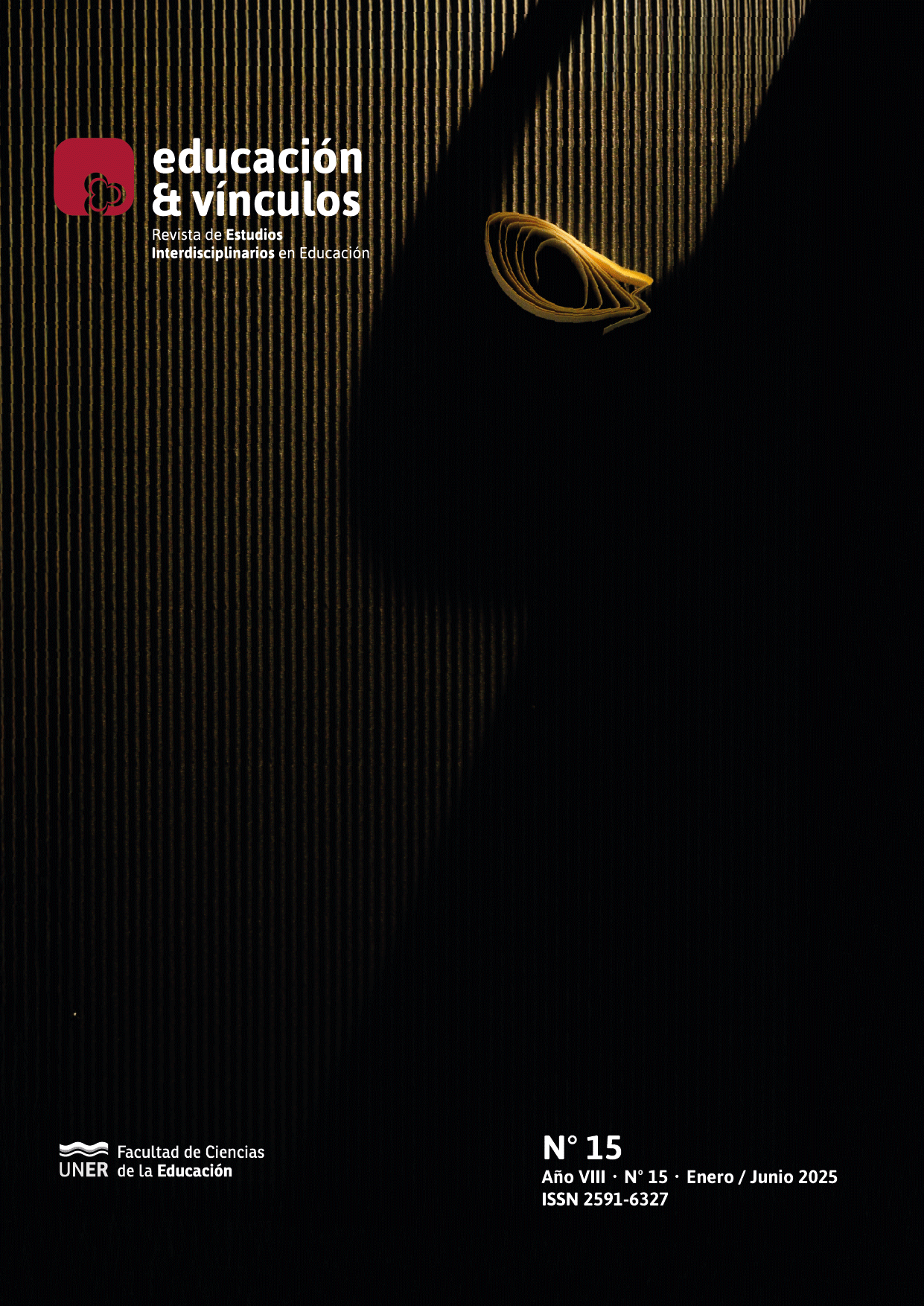By force of law. Critical reflections on the process of construction of school coexistence in the secondary school context in Tucumán
DOI:
https://doi.org/10.33255/2591/2256Keywords:
School coexistence, School coexistence agreements, Participation, Disciplinary logic, Institutional accompanimentAbstract
This article attempts to critically examine certain aspects of the process of building school coexistence from the political coordinates that are assumed for this purpose, that is, to tend towards a school in which its actors participate in the construction of rules and recover their educational value, to build a democratic authority from the position of the adult, to work on the promotion of healthy relational climates, to address collectively the disruptive aspect of school violence from a reparatory logic of the legality of the link with the other. Basically, this analysis arises as a product of the reflection, on the one hand, of the practice as a member of school guidance teams, which depend on the Ministry of Education of Tucumán, in the primary and secondary levels of the department of Burruyacu in the province of Tucumán and, on the other hand, as a member of the Evaluation Commission of the CET during the beginning of this policy. Therefore, the analytical cores to approach and try to understand the complexity of the current phenomenon are: A. the textuality of the legal as a political end B. the political-relational distancing in the accompaniment process C. absence of institutional recognition.
Downloads
References
ALVAREZ PRIETO, N. (2010). La disciplina y la evaluación escolar en los prolegómenos de la Ley Federal. Memoria Académica VI Jornadas de Sociología de la UNLP. http://www.memoria.fahce.unlp.edu.ar/trab_eventos/ev.5534/ev.5534.pdf
BARRERIO, T. (2010). Conflictos en el aula. Noveduc.
CORNÚ, L. (2017). Acompañar: el oficio de hacer humanidad. En FRIGERIO, G., KORINFELD, D. y RODRIGUEZ, C. (Coords.) Trabajar en instituciones. Los oficios del lazo (pp. 101-114). Noveduc.
FURLAN, A. y MAGARIL, G. (2017). La convivencia como condición de viabilidad en las escuelas secundarias. Educación, formación e investigación,
, 280-289. http://dges-cba.edu.ar/wp/wp-content/uploads/2022/04/Revista_EFI_05-2017.pdf
GARCÍA COSTOYA, M. (Coord.) (2010). Violencia en las escuelas: un relevamientodesde la mirada de los alumnos II. Ministerio de Educación.
GIRARD, K. y. KOCH, S. J. (1998). Resolución de conflictos en las escuelas. Manual para educadores. Granica.
LERNER, M. y BRAWER, M. (2014). Violencia. Cómo construir autoridad para una escuela inclusiva. Aique.
MIGUEZ, D., GALLO, P. y TOMASINI, M. (2015). Las dinámicas de la conflictividad escolar. Procesos y casos en la Argentina reciente. Miño y Dávila.
NUÑEZ, P. y LITICHEVER, L. (2015). Radiografías de la experiencia escolar. Ser joven(es) en la escuela. Grupo Editor Universitario.
Ley Nacional N° 26892. Promoción de la Convivencia y el Abordaje de la Conflictividad Social en las Instituciones Educativas. 4 de octubre de 2013.
ONETTO, F. (2014). ¿Acuerdos de convivencia sólo para alumnos? En Kaplan, Andrea y Berezán, Yanina (Comps.). Prácticas de no-violencia. Intervenciones en situaciones conflictivas. Experiencias con docentes, padres y alumnos (pp. 35-48). Noveduc.
PINEAU, P. (2001). ¿Por qué triunfó la escuela? O la modernidad dijo: «Estoes educación», y la escuela respondió: «Yo me ocupo», En PINEAU, P., DUSSEL, I. y CARUSO, M. La escuela como máquina de educar. Tres escritos sobre un proyecto de modernidad. Paidos.
Resolución CFE 93/09. Orientaciones para la organización pedagógica e institucional de la Educación Secundaria Obligatoria, 17 diciembre.
Resolución Ministerio de Educación de Tucumán 1223/5, 13 de diciembre 2011.



